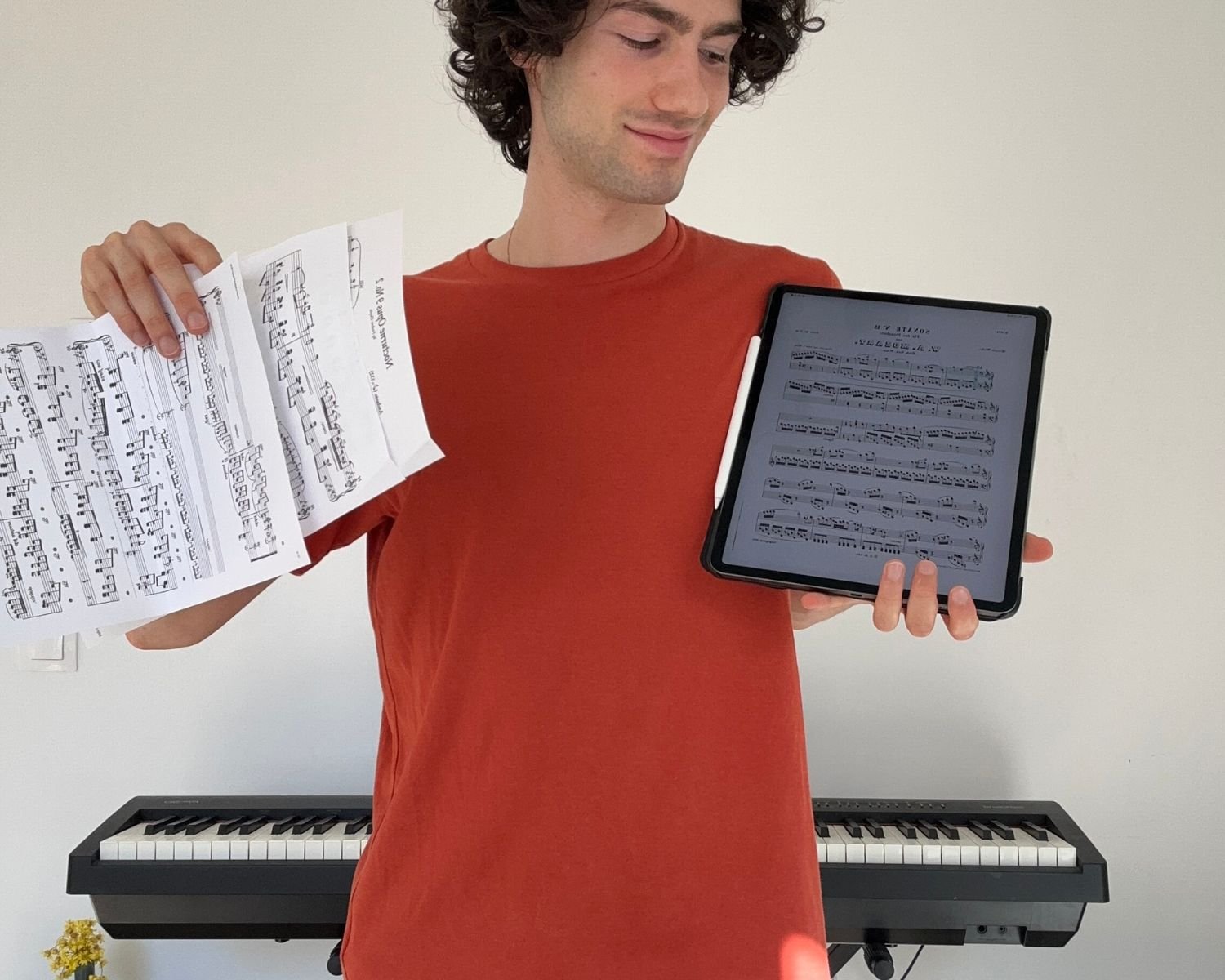Where does the score come from?
The musical score, a true universal language, is much more than just a series of notes and symbols on a sheet of paper. It embodies the essence of human creativity, capable of capturing and conveying the deepest emotions of the soul. Yet behind this graphic representation of notes, rhythms and harmonies lie centuries of innovation, evolution and perseverance. From antiquity to the revolutionary developments of the Renaissance, from printing to the advent of notation software, discover how the score came to be what it is today, and how it continues to evolve.
The origins of music notation
Antiquity: the beginnings of notation
The first attempts at music notation were made in ancient times. At that time, music writing was still in its infancy, with composers creating works that were essentially transmitted orally. These early notations were rudimentary, leaving musicians considerable scope for interpretation.
The Middle Ages: development of neumatic notation
In the Middle Ages, music notation underwent significant development with the emergence of neumatic notation . Neumes, specific graphic signs, were introduced to indicate the melodic contours of liturgical chants. Although these neumes brought a certain structure to notation, they were still far from constituting a detailed score as we conceive it today.
💡 The history of the musical score is rich in composers who have contributed to its development. Among them, Guillaume de Machaut, a 14th-century French composer famous for his work La Messe de Notre-Dame, played a major role in the evolution of music notation. In particular, he introduced innovations in the way notes were represented at rythm and in the development of polyphonic music.
The invention of musical note names by Guido d'Arezzo
The names of musical notes were invented in the Middle Ages, precisely by Guido d'Arezzo, an 11th-century Italian Benedictine monk. Guido d'Arezzo assigned names to the notes using the first syllables of the verses of a Latin religious hymn, thus creating the basis for our system of note names: ut, re, mi, fa, sol, la, si. Guido d'Arezzo then introduced the notation of musical notes on horizontal lines, prefiguring the musical staff we use today.
This system, known as solfeggio, greatly simplified the teaching of music and has endured to the present day. The only difference: the note "ut" was later replaced by "do" for pronunciation reasons.
The Renaissance age: from Gutenberg to Petrucci
Printing and its impact on music
The Renaissance was a pivotal period in the evolution of music notation, marked by significant advances that revolutionized the way music was created, disseminated and preserved.
At the heart of this revolution was Johannes Gutenberg's invention of the printing press in the 15th century. This technological innovation had a considerable impact on the field of music, enabling musical scores to be reproduced quickly and efficiently in large quantities. Before printing, the creation of musical manuscripts was a laborious and costly task, limiting access to music.
Ottaviano Petrucci: the pioneer of printed score publishing
His name may not ring a bell, but Ottaviano Petrucci was a pioneer in the publication of printed musical scores. In the late 15th century, this Italian publisher developed specific printing techniques for music, including the use of movable metal type. This innovation made it possible to produce high-quality musical scores on an unprecedented scale. Petrucci's first work, the Harmonice Musices Odhecaton, published in 1501, contained a collection of Renaissance compositions. This landmark publication paved the way for the international dissemination of music and the exchange of musical ideas between composers and performers.
💡 Did you know? In the 18th century, Johann Sebastian Bach, a renowned German composer, also left an indelible mark on the history of sheet music. He developed specific notation systems, such as tempered music notation and figured bass notation, which influenced the way music was written and performed at the time.
The 20th century: between innovation and evolution music notation
With the advent of computer technology in the 20th century, music notation software began to emerge. Technology has had a major impact on the musical score, not only in terms of creation and distribution, but also in terms of how musicians interact with scores.
Musicians now have access to digital scores on tablets and laptops, reducing the need to print out paper scores. Digital scores can be easily annotated, modified and shared, facilitating musical practice and teaching.
Scores of the future: towards a digital era
More and more traditional scores are being converted into digital formats such as PDF, MusicXML or even notation software-specific formats. This digitization facilitates access to a vast musical repertoire, enabling musicians to explore a wide range of scores without the need for cumbersome physical carriers.
As for music notation software, it is becoming increasingly sophisticated, offering advanced features such as automatic recognition of handwritten notation, computer-aided music and automatic generation of instrumental parts. Online collaboration at music notation enables musicians from all over the world to work together on musical projects in real time, without geographical barriers.
🎶 Do you play guitar, piano, violin or any other musical instrument, solo, in a band or orchestra? Are you a singer in a choir? With Newzikimport all your scores, annotate them and transpose them in no time! Newzik gives you the freedom to play wherever you want, whenever you want, without the hassle of carrying around all your scores or having to turn the page. Experience music differently with Newzik!

